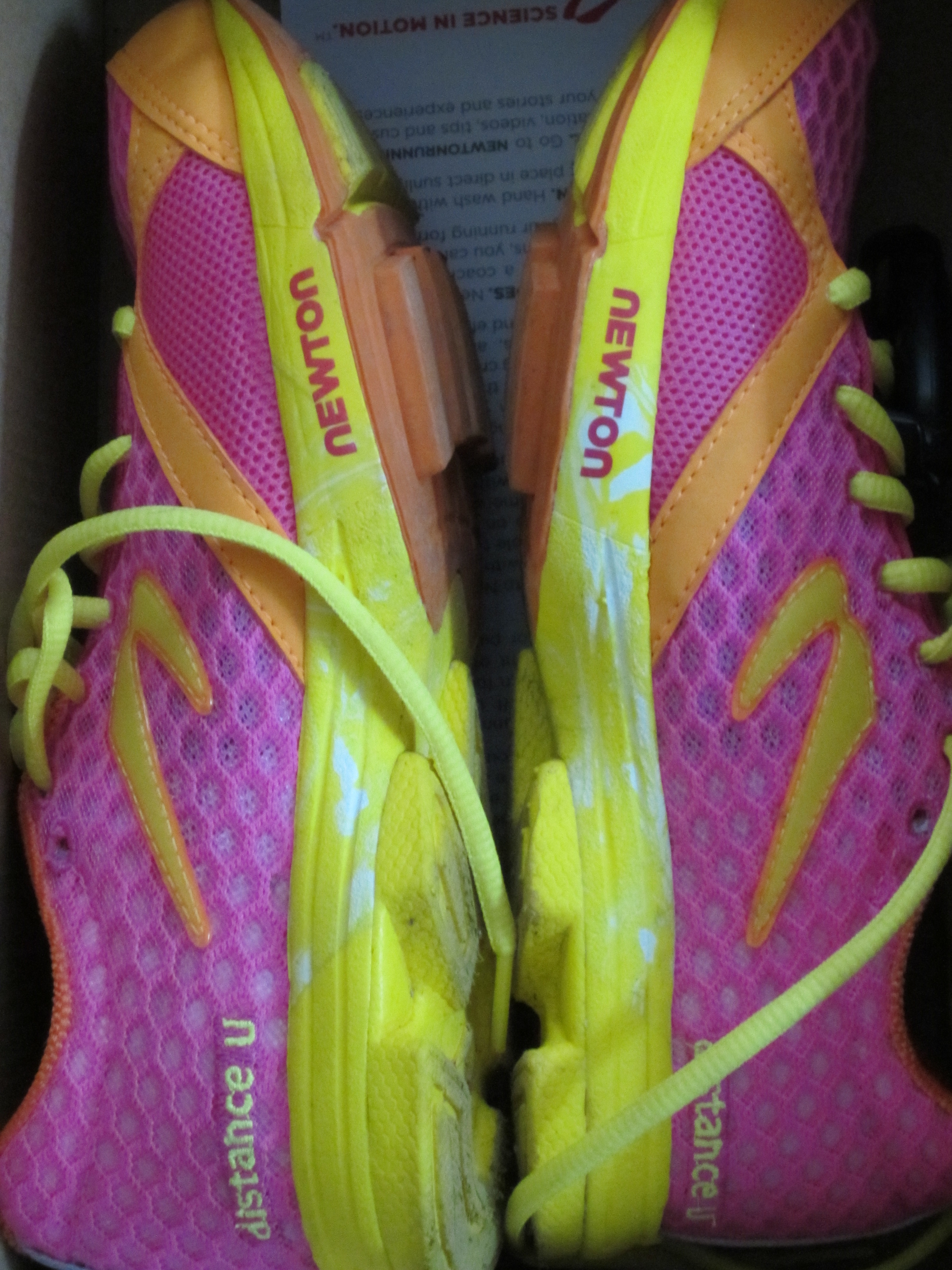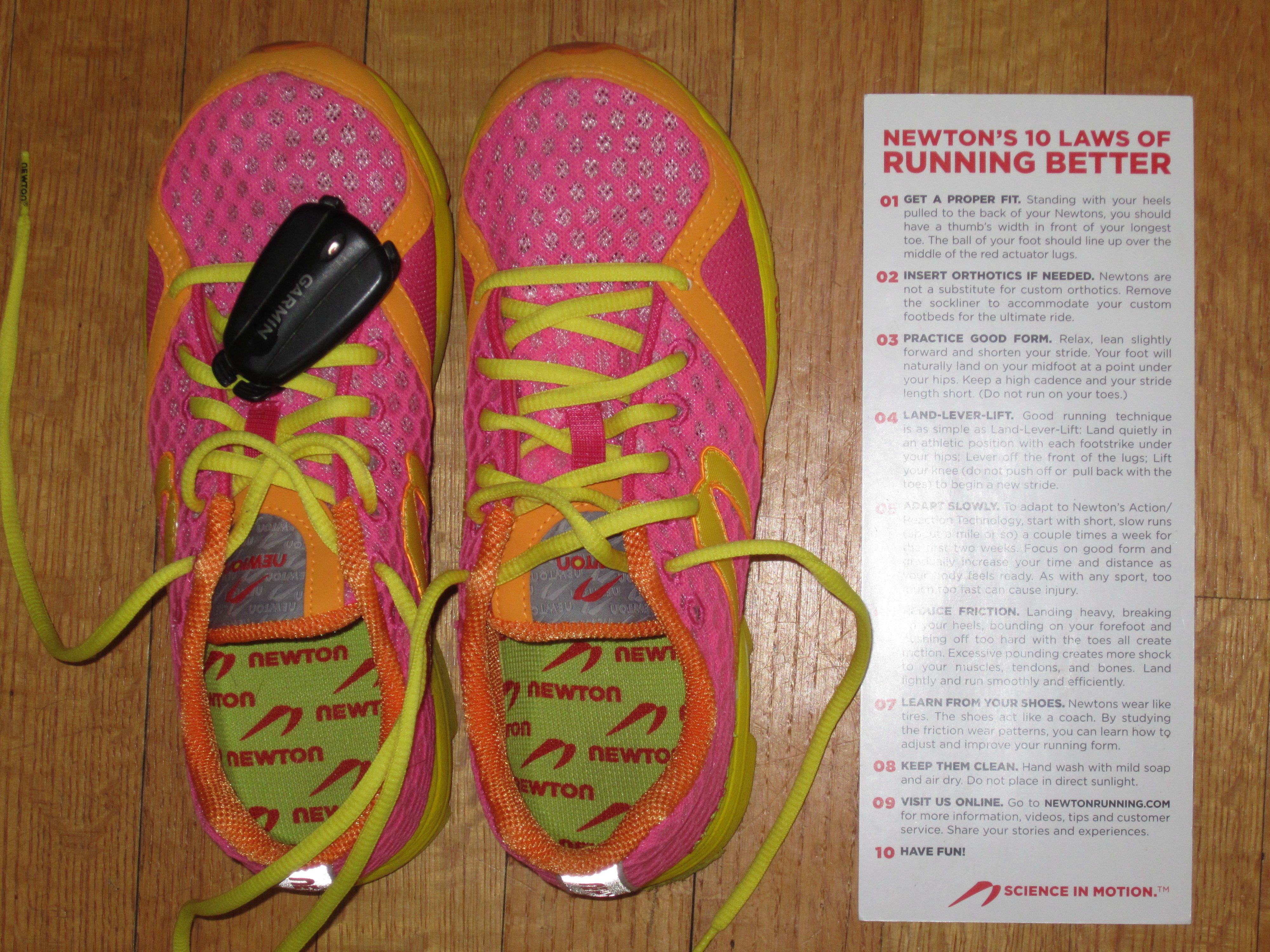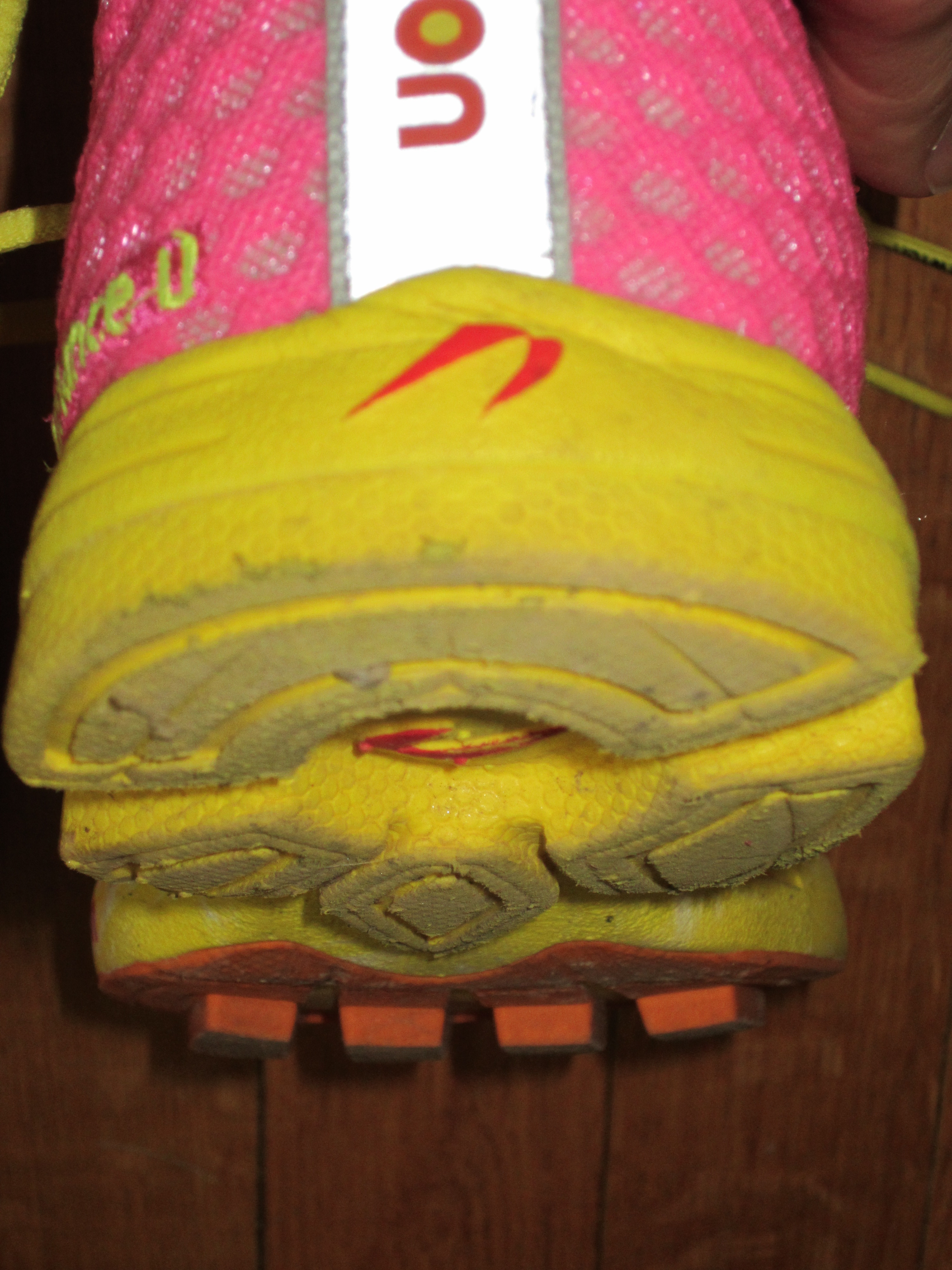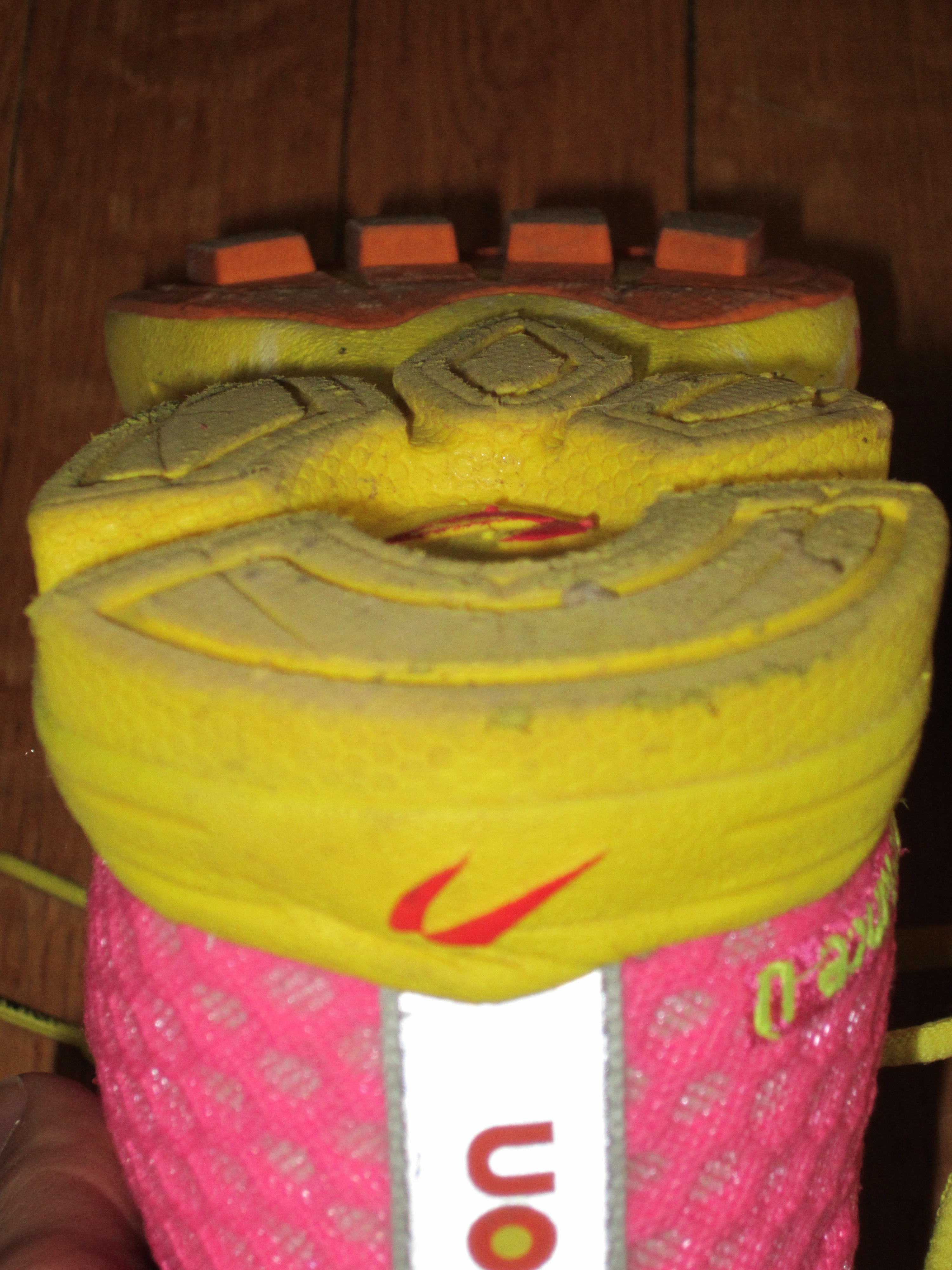

It’s funny how once you hear about something, you start to hear about it everywhere. Well thats what happened to me with the Newton shoes. After seeing the Newton shoes at the Cherry Blossom 10 miler, I went home excited about participating the next week in the running form clinic, and started reading the April issue of Runner’s World, where there was a several page spread dedicated to an article about Newton shoes.
A couple years ago when I read the book, Born to Run, by Christopher McDougall, the Vibram FiveFingers first became popular. I wondered is this barefoot running concept just a trend? A trend similar to the Atkins diet, where everyone starts doing it, but then five years later, experts reveal that evidence shows it is not healthy, but actually unhealthy, and an injury risk.  Or is barefoot running, ironically the future type of running. Will all running shoes evolve into something more weightless, a minimalist shoe? These are the questions that have crossed my mind, but after being introduced to the Newton shoe and then seeing so many other running brands, such as Brooks and Nike, come out with a shoe that mimics running barefoot, I am now starting to believe that this is not a trend, but rather the future to running.
So as I said earlier, I found a lot of my information about Newton’s in the April issue of Runner’s World. This is what¬†Runner’s World¬† had to say. First thing that I was confused about was does Newton consider itself a minimalist shoe? The answer to that is a big fat NO, which was a huge relief.
Minimalist shoes such as the Vibrams, scare me. And the reason why, is because of injury. When runners first started to transition into barefoot running, they purchased the Vibrams, and many got injured. Because of the traditional running shoe, having so much protection, feet became weak. Many runners didn’t have the muscles developed in their feet in order to run in the Vibrams. So it was suggested to adjust your feet and strengthen them by simply walking around in the Vibrams or going on short runs no longer than a mile. But too many runners got to excited about running barefoot and went to far to fast, causing injuries to themselves.¬†¬†So it wasn’t necessarily the shoe that caused injury, but rather the runner, herself.
The inventor of Newton shoes, Danny Abshire first started developing the shoe 20 years ago. He claims in the Runner’s World article that this shoe is nothing like what runners have¬†worn in the past. And although, it weighs about a third less than the traditional running shoe it is not‚ÄĒa”minimal” shoe.
Well if it is not a minimalist shoe, then what is so special about the Newton? For one it is weightless, which makes it feel like a minimalist shoe. Seriously, when I put Newtons on, I felt like there was no shoe on at all. ¬†In the Runner’s World article, Abshire warns that, heel-striking is inefficient, and potentially dangerous. And runners heel-strike, he says, only because traditional shoes have an unnecessarily¬†high heel-to-toe drop.¬† But Newton shoes have a ¬†heel that is more level, only measuring 6 mm, which in ways is similar to the minimalist shoe. By having less heel, it makes it easier to run on the forefoot.¬†¬†But what makes this shoe so unique is the lugs found on the forefoot, preventing injury. The lugs are plump and springy cushioning similar to a trampoline. It is elevated maybe a half inch or so away from the shoe. These lugs provides a shock absorber, while bringing energy back to the runner. Reducing impact, and returning energy back to the runner, allowing the runner to run faster and farther, is what Newton calls Action/Reaction technology.¬† This design is very odd, but helps mimimc the same stride you would have if you were barefoot, which Abshire calls, “natural running.”
According to Runner’s World, Abshire, who has completed one of the toughest ultras in the country, the Leadville Trail 100, felt like the sport became overcomplicated‚ÄĒand dangerous‚ÄĒas shoes got more and more built up. If you run barefoot, on the sand in on the beach, you will automatically land on your forefoot, so why use a traditional running shoe that changes your running stride and may cause you to heel strike.¬†Experts are now saying landing on the heel is not proper running form, and it puts stress on ankles, knees, hips, and back.
Learning this, made me very attracted to the Newton company. People talk about minimalist shoes, and lightweight trainers, being for shorter distances. Many say you can not put serious milage on these weightless shoes. But I am a distance runner, who trains for marathons, so it is important for me to hear that the inventor of the Newton shoe, has completed ultras, and is too, a distance runner. I also like the idea that this company, is promoting natural running form. Spreading the word about proper running form, and getting runners running correctly, is the key to injury prevention, regardless what shoes you run in.
In conclusion, similar to a minimalist shoe, the ideas behind the Newton shoe are just like¬†McDougall’s idea’s in his book, Born to Run.¬†The Tarahumara Indians of Mexico, were known to run long distances daily in thin-soled sandals, in order to survive. If they could run like that, we are capable of it as well. But we need to learn proper running form, which is landing on our forefoot, avoiding heel striking. ¬†Runner’s World reveals, ¬†that Abshire claims, “Cavemen were smart enough to build a moccasin‚ÄĒa protective coating for the foot. But they also lived in a natural environment. It wasn’t concrete and asphalt. This is where people get mixed up. Our shoes promote natural running in an unnatural world.”
© 2012








